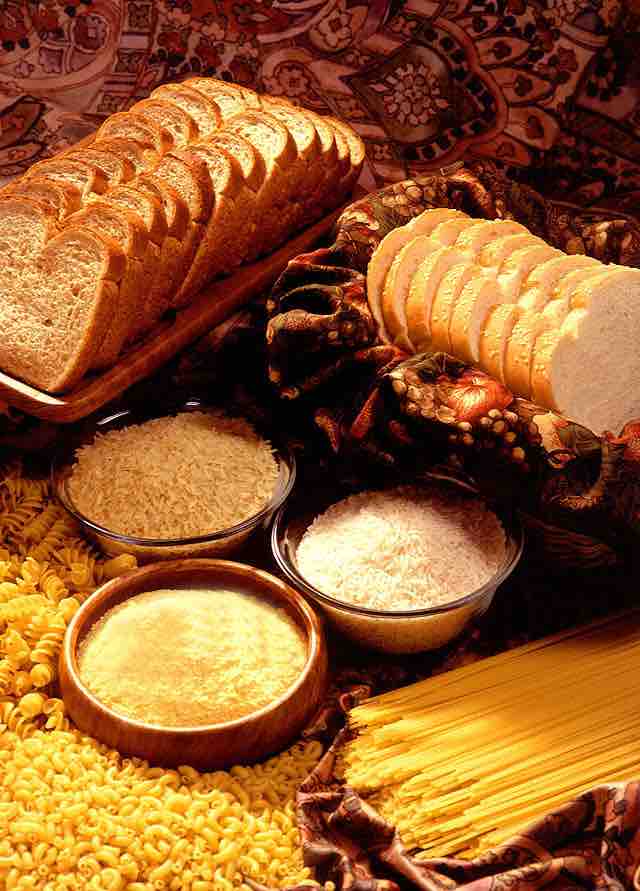Foods high in carbohydrate include fruits, sweets, soft drinks, breads, pastas, beans, potatoes, bran, rice, and cereals. Carbohydrates are a common source of energy in living organisms , however, a carbohydrate is not an essential nutrient in humans.

Carbohydrates are a class of macromolecule
Grain products are rich sources of carbohydrates.
Carbohydrates are not necessary building blocks of other molecules, and the body can obtain all its energy from protein and fats. The brain and neurons generally cannot burn fat for energy but use solely glucose or ketones. Humans can synthesize some glucose (in a set of processes known as "gluconeogenesis") from specific amino acids or from the glycerol backbone in triglycerides and, in some cases, from fatty acids. Carbohydrate and protein contain 4 kilocalories per gram, while fats contain 9 kilocalories per gram. In the case of protein, this is somewhat misleading as only some amino acids are able to undergo conversion into useful energy forms.
Organisms typically cannot metabolize all types of carbohydrate to yield energy. Glucose is a nearly universal and accessible source of calories . Many organisms also have the ability to metabolize other monosaccharides and disaccharides, though glucose is preferred. Polysaccharides are also common sources of energy. Even though these complex carbohydrates are not very digestible, they may comprise important dietary elements for humans. Called "dietary fiber," these carbohydrates enhance digestion, among other benefits.

Glucose Molecule
Image of a glucose molecule containing a fixed ratio of carbon, hydrogen and oxygen.
Based on the effects on risk of heart disease and obesity, the Institute of Medicine (IOM) recommends that American and Canadian adults get between 45–65% of dietary energy from carbohydrates. The Food and Agriculture Organization (FAO) and World Health Organization (WHO) jointly recommend that national dietary guidelines set a goal of 55–75% of total energy from carbohydrates, but only 10% directly from sugars (their term for simple carbohydrates).